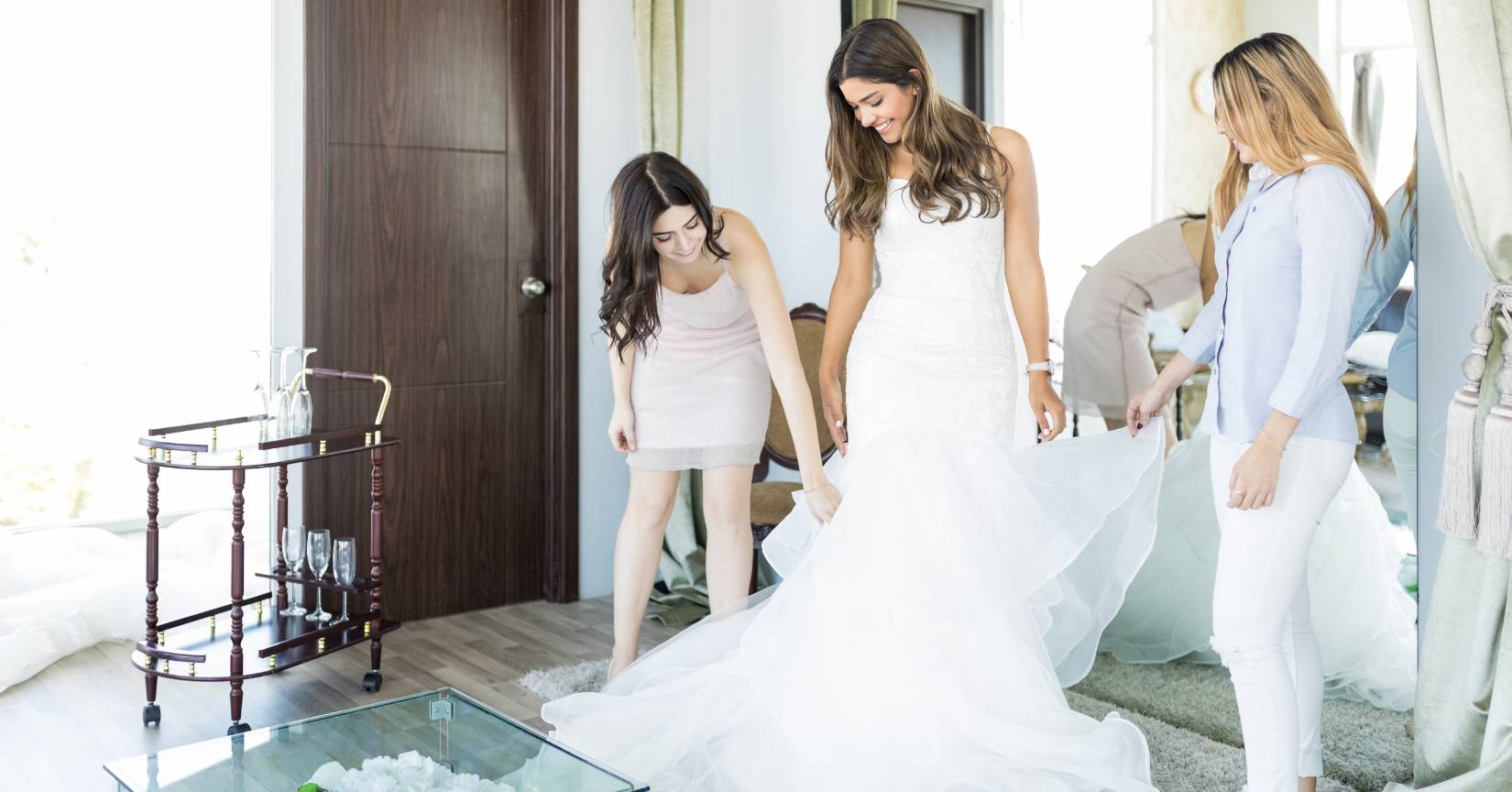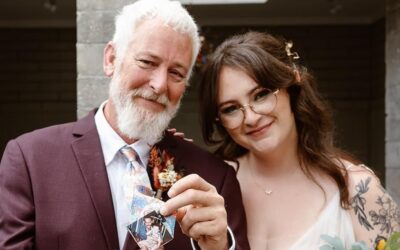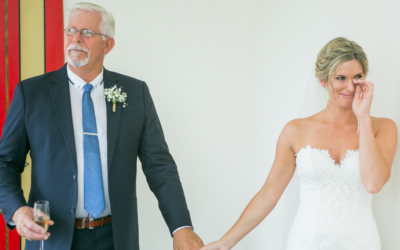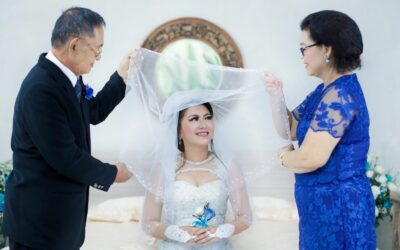

by Lifechoicely
Traditional wedding dresses around the world are beautiful and unique representations of the customs and heritage of their respective countries.
Each dress is adorned with intricate embroidery in patterns that hold special meaning to the people of that culture. In this article, we will explore the most common traditional wedding dresses from around the world, highlighting the beauty and cultural significance of each one.
In western cultures such as Europe, North America and some parts of South America, the most common traditional wedding attire for brides is the white wedding dress with a long train and a matching veil. The dress is typically made from white or off-white fabric, such as silk, satin or taffeta, and often features intricate embroidery, beading or lace. It is considered a symbol of the bride’s virginity and virtue. The long train is a symbol of the bride’s nobility and purity, and the veil represents her humility and obedience to her husband. This style of wedding dress is often worn with a tiara or other headpiece and a bouquet of flowers. The tradition of the white wedding dress can be traced back to the year 1840, when Queen Victoria of England wore a lacy white gown for her own wedding. Today, white bridal attire is an important part of the traditional wedding ceremony in many western cultures.
Wedding Dress with a Headpiece and Veil
A traditional white wedding dress with a headpiece and veil is also worn by brides in Greece. The headpiece is typically made of flowers or ribbons, such as a crown of orange blossoms or a wreath of ivy. The headpiece is often combined with a veil, which is a symbol of the bride’s virginity and purity. The bride may also choose to wear traditional Greek jewelry, such as gold or silver earrings and a necklace. The entire ensemble is meant to showcase the bride’s beauty and elegance. In the traditions of Greece, the attire worn by the bride and groom is considered an important part of the wedding ceremony.
Wedding Dress with a Colorful Embroidered Shawl
The traditional “traje de novia,” or bridal attire, of Mexico is a dress made of white or off-white fabric, such as silk or satin, and commonly decorated with intricate lace or embroidery. The dress is worn with a colorful embroidered shawl, known as a “rebozo.” The rebozo is made of silk or fine cotton. It features embroidery or design patterns with traditional Mexican motifs, such as flowers, birds or geometric designs.
The bride also wears a headpiece, known as a “tiara,” and a veil. The tiara is traditionally made of flowers or ribbons and is worn on top of the head. The veil symbolizes the bride’s virginity and purity. To complete the outfit, the bride also may also wear traditional Mexican jewelry and carry a bouquet of flowers.
The groom usually wears a traditional Mexican suit called the “charro.” Both the bride’s white dress with rebozo shawl and the groom’s charro suit are an important part of the traditional Mexican wedding ceremony. Together they display one part of the rich culture and heritage of Mexico.
Aso-oke
Traditional wedding clothes in Nigeria for both the bride and the groom are made from “aso-oke”. Aso-oke is the colorful, hand-woven cotton cloth produced by the Yoruba people of Nigeria. The Yoruba word aso-oke translates as “top cloth” in English, referring to the fabric’s high quality. In contrast to many other cultures, the Nigerian bride is not limited to wearing white—the couple can choose any colors they like, and the brighter the better! The bride’s outfit usually includes a wrap-around skirt, or “iro;” a matching blouse, called a “buba;” a headwrap, known as a “gele;” and a shoulder sash, or “ipele.” These items might also be embellished with embroidery, beads or shells in traditional Nigerian designs. The bride also wears traditional Nigerian jewelry such as earrings, bracelets and a necklace.
Qipao or Cheongsam
The “qipao” or “cheongsam” is a traditional Chinese dress featuring side slits, a fitted bodice with a button closure, and a high mandarin collar. It was a staple in the everyday wardrobe of Chinese women from the 1920s to the 1960s, but then gradually waned in popularity. Although today’s Chinese women prefer modern styles for everyday use, the iconic qipao is still the favored choice for weddings and other special occasions. In a traditional Chinese wedding, the bride wears a red wedding qipao because red is believed to bring good luck and ward off evil spirits. The side slits of the dress are meant to symbolize the bride’s willingness to move forward and embrace the future. Often the wedding qipao is adorned with intricate embroidery featuring traditional Chinese symbols such as dragons, phoenixes and peonies. The bride usually completes the ensemble with a red veil and red shoes for the ceremony, too.
Saree and Lehenga
For brides in India, “sarees” and “lehengas” are the most common options for wedding attire. A saree is a piece of cloth five to nine meters in length that is secured around a woman’s waist and then draped over her body to form an elegant flowing garment. It is usually worn with a matching blouse and a petticoat. A lehenga is an outfit that includes a cropped or long blouse, a full ankle-length skirt, and a covering draped over the head and shoulders. Indian wedding garments are typically made from silk or other fine fabrics, and are often adorned with intricate embroidery, beadwork, or gold and silver threadwork.
Red is the traditional color for bridal attire in India since it symbolizes passion, purity and new beginnings. Red is also the color of the Hindu goddess Durga. In some regions, the saree is worn in different colors such as gold, pink, and maroon, as they are all considered auspicious colors for a wedding. Indian brides almost never wear white, however, as it is the color of mourning in that country.
To complement her saree or lehenga, the bride often adorns herself from head to toe in 24 karat jewelry—and each piece carries meaning. Bangles, for example, signify luck, fertility, and safety. As another important custom, henna designs are applied to the bride’s feet and hands the day before the wedding. Henna symbolizes beauty, joy and spiritual awakening.
Kimono
From ancient times, the traditional garb of Japan has been the “kimono.” Although the Japanese of today have adopted western-style clothing for everyday use, kimonos are still popular for certain activities and special occasions, including traditional weddings.
Traditional Japanese weddings are done in the Shinto religious style and usually take place at a Shinto shrine. There are two main types of wedding kimono for brides: an all-white kimono called the “shiromuku” and a brightly colored kimono called the “iro-uchikake.” Either kimono may be worn for the wedding ceremony, but frequently the bride chooses to wear the white shiromuku for the wedding. The white color symbolizes the brightness of the sun, but also shows that the bride is ready to take on the color of her new husband’s family. Commonly, the bride changes later into the colorful iro-uchikake for the reception. Many brides will change yet a third time at the reception into a western style evening gown.
The wedding kimono is paired with one of two matching white headdresses. The “wataboshi” is worn as the equivalent of the western wedding veil because it hides the bride’s face from everyone except the groom during the wedding ceremony. The “tsunokakushi” headdress does not hide the bride’s face. However, its name literally means “to hide the horns,” stemming from the folk belief that women become demon-like and grow horns when they get jealous! Under either type of headdress, the bride wears an elaborate wig traditionally styled in a very high set bun.
While traditional Shinto weddings are far from extinct, it is fashionable for modern couples in Japan to have a western style wedding: The bride wears a white bridal dress with a veil, the groom wears a tuxedo and the couple is married by a Christian priest or pastor in a wedding chapel made to look like a church.
Hanbok
The “hanbok” is a traditional Korean garment, featuring a full, flowing skirt and a long-sleeved, fitted top. These days, it is mostly reserved for traditional celebrations such as weddings or the Lunar New Year. A bridal hanbok is usually colored pink or red, symbolizing good luck and prosperity, and is often adorned with intricate embroidery. The bride also wears a special headpiece made of silk or satin and decorated with flowers or other traditional Korean symbols. A colorful pair of shoes completes the ensemble. The bridal hanbok showcases the bride’s beauty and elegance while expressing an integral part of traditional Korean culture.
Dirndl
The “dirndl” is considered the traditional feminine attire of Germany, although it is also worn in Austria, Switzerland and parts of Italy. The dirndl features a full, knee-length skirt with an apron, and a bodice with a low-cut neckline. For traditional weddings, the bride often wears an intricately embroidered white or off-white dirndl. A simple garland of flowers, worn as a headpiece, and a light, shawl-like cloth draped around the shoulders complete the bridal outfit. The white dirndl symbolizes the purity of the bride, while the dirndl itself is a beautiful expression of iconic German culture.
Related Articles
Related
Best Wedding Gifts for the Bride’s and Groom’s Parents
You want to give them something that shows how much you care but also matches their style and personality. It should be something they can cherish for years to come, but also enjoy in their daily life. Sounds daunting, doesn’t it?To help you find the best wedding...
How to Write a Heartfelt Wedding Speech for Your Parents
How do you write a wedding speech for your parents that expresses your feelings and makes them feel appreciated?If find yourself asking the above question, you might also have some of the following wedding speech questions: How do you avoid being too cheesy or boring?...
5 Meaningful Ways to Honor Your Parents During Your Wedding
The moment a father walks the bride down the aisle or when a mother helps the groom with his tie—these are iconic wedding moments that highlight the important role of the parents. While these traditional gestures are meaningful, there are many other unique ways to...



